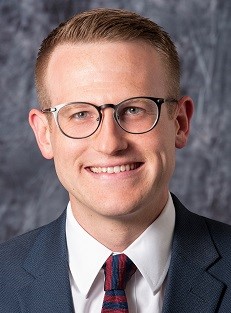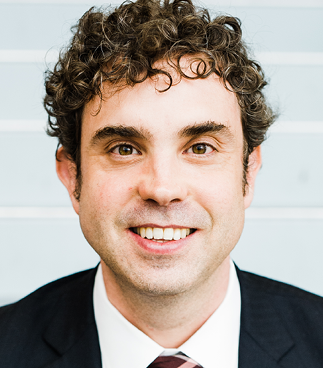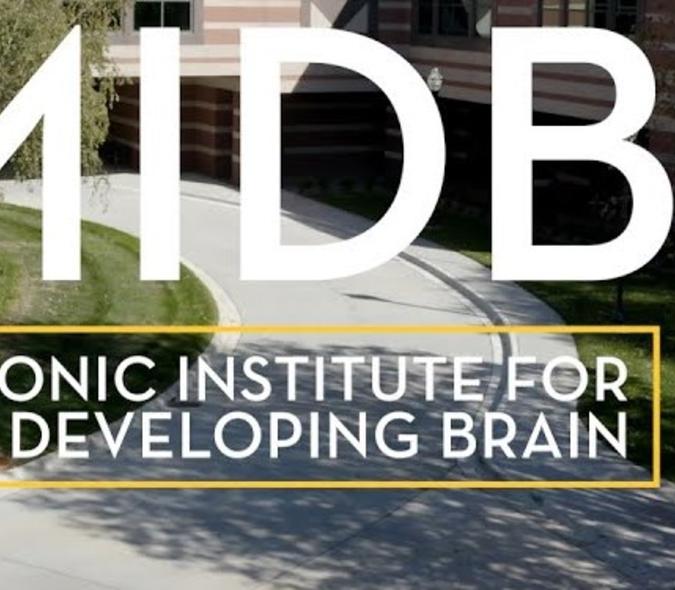
Lab working across disciplines to find innovative answers to big questions about improving mental health
Interdisciplinary collaborations are increasingly important to scientific and medical innovation. At the University of Minnesota, one lab in particular is leading this trend. The Herman-Darrow Human Neuroscience Lab believes that joining two areas that normally have little contact — psychiatry and neurosurgery — is critical to the future of mental health.
The lab is led by co-directors, Alexander Herman, MD, PhD; and David Darrow, MD, MPH. Herman is a psychiatrist; Darrow a neurosurgeon. What brought these physician-scientists together is a joint commitment to improving mental health by connecting symptoms and behavior to brain circuits.
 “It’s why I got into neurosurgery,” said Darrow (pictured at left). “To understand what’s happening in the brain so we can more effectively treat psychiatric disorders.” Herman agrees, adding, “Our long-term goal is to develop therapeutics that will improve the way people live their lives. To do that, we need to be able to see how interventional approaches can connect with functional ways of thinking about disorders, behavior, and cognition.”
“It’s why I got into neurosurgery,” said Darrow (pictured at left). “To understand what’s happening in the brain so we can more effectively treat psychiatric disorders.” Herman agrees, adding, “Our long-term goal is to develop therapeutics that will improve the way people live their lives. To do that, we need to be able to see how interventional approaches can connect with functional ways of thinking about disorders, behavior, and cognition.”
Darrow and Herman look through different lenses at their work. One lens they share in common is their interest in the brain’s circuitry, particularly the circuits that govern motivation, mood, and the reward system. These circuits underpin symptoms that are seen in conditions treated by psychiatry or neurosurgery such as depression, addiction, Parkinson’s disease, pain, or epilepsy. “We want to figure out what it looks like electrically in the brain when a depressed patient says they can’t get out of bed in the morning,” said Darrow. “If we can do that, we can potentially modulate the circuit to free patients trapped by pathological activity or we can track circuitry changes over time when a patient is on medication or in therapy.”
The HD Lab team has three primary priorities:
- To identify the circuitry – or prefrontal “biomarkers” – of motivation and cognition
 “At a certain resolution, I’m sure the brain’s circuitry would be as recognizable as a fingerprint,” said Herman (pictured at left). “When we view brain circuits dynamically, they are verifiable down to the individual level, if you have enough data. What is not yet known is how those patterns relate to an individual’s strengths or weaknesses and if they’re able to do what they want to do or if they’re impeded by mood, anxiety or cognitive problems.”
“At a certain resolution, I’m sure the brain’s circuitry would be as recognizable as a fingerprint,” said Herman (pictured at left). “When we view brain circuits dynamically, they are verifiable down to the individual level, if you have enough data. What is not yet known is how those patterns relate to an individual’s strengths or weaknesses and if they’re able to do what they want to do or if they’re impeded by mood, anxiety or cognitive problems.”
The circuitry related to motivation and cognition is involved in conditions ranging from depression and addiction to perhaps surprisingly, Parkinson’s disease and chronic pain. “Circuits have many different connections. The question is how much of a circuit do you need to understand motivation and cognition,” said Darrow. “We want to get to the point of understanding it well enough to design an intervention tailored to each person.”
- To advance the ability to optimize neuromodulation
When the lab is able to understand the biomarkers of pathological activity contributing to a patient’s disease, then a considerable portion of its efforts are invested in figuring out how to optimally treat the patient. “The great thing about the human brain is that it can change, but that also means that our treatments must be specific to each individual and adapt over time.” The HD lab is specifically interested in how to change the treatment for each patient in real time. “We can move faster by setting up a closed-loop, computer-based assessment that asks someone to practice a memory task and the computer algorithm will help figure out how to improve the treatment such as neuromodulation to better serve each patient.” “David has made the most progress in spinal cord stimulation1, but we hope that similar principles will apply to improving cognitive effort or motivation,” said Herman.
- To use transdiagnostic processes to develop more effective treatments
A transdiagnostic process is a mechanism that is present across disorders and is either a risk factor or a maintaining factor for that disorder. “What we already know is that a lot of things going on with our pain patients are the same as those in our depressed patients or those with addiction, Parkinson’s or epilepsy,” said Darrow. “The patients have many of the same problems because the same parts of the brain are often involved.”
If you have chronic pain, for example, you can develop depression or anxiety. “Understanding this helps us better understand the disease state, which leads to more effective treatments for patients,” he continued. “We believe that looking at patients in terms of their circuits – and how they’re feeling – will give us a better way to treat them. It boils down to their biology…to really getting to know a patient on a cellular or circuit level.”
Traditional diagnostic categories, according to Herman, don’t work well when applied to many of the conditions that affect mood, decision making, and how people get through their lives. “Large-scale studies of the same intervention or diagnostic label have been minimally effective,” he noted. “We both think that in the long run, finding ways that deeply individualize diagnostics and treatments will lead to better outcomes for people.”
This is almost like climate change – it has to be done but it’s hard to operationalize. “What we’re suggesting is difficult to study and to come up with rigorous statistical approaches to capture the effects,” said Herman. “Everyone wants to subdivide depression into three categories. What if you must subdivide it to the individual level to see any benefit? If that’s the limit, we need to rethink how we approach medicine.”
The Herman Darrow Human Neuroscience Lab is trying to do just that. “That’s why we’re here — to take that on,” said Darrow. “We’ve broken down this giant problem in every way we can make it work.”
That’s also why the lab team picked their projects, according to Herman. “It’s about choosing the correct view on the transdiagnostic spectrum,” he said. “We have good modeling in people getting spinal cord stimulation and with spinal cord injury patients getting epidural stimulation. What we’re doing now is getting data on the big construct that enables people to do what they need to do every day in more effective ways.”
Herman and Darrow started a podcast called, Craniotomy — Peering into the minds of those on the edge of cognition and neuromodulation, to explore these issues (it can also be found on Spotify).
1 E-STAND (Epidural Stimulation After Neurologic Damage) clinical trial



